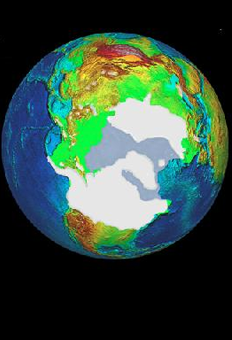NOAA/WDS Paleoclimatology - Yukon 17KYr Midge-Inferred July Temperature
This archived Paleoclimatology Study is available from the NOAA National Centers for Environmental Information (NCEI), under the World Data Service (WDS) for Paleoclimatology. The associated NCEI study type is Climate Reconstruction. The data include parameters of insect|paleolimnology with a geographic location of Yukon Territory, Canada. The time period coverage is from 17046 to 0 in calendar years before present (BP). See metadata information for parameter and study location details. Please cite this study when using the data.
Dataset Citation
- Cite as: Kurek, J.; Cwynar, L.C.; Vermaire, J.C. (2009-01-01): NOAA/WDS Paleoclimatology - Yukon 17KYr Midge-Inferred July Temperature. [indicate subset used]. NOAA National Centers for Environmental Information. https://doi.org/10.25921/44ks-mw66. Accessed [date].
- Please refer to Credit tab for full citation information.
Dataset Identifiers
- doi:10.25921/44ks-mw66
- noaa-recon-8705
- NCEI DSI 1200_02
- NCEI DSI 1200_01
ISO 19115-2 Metadata
noaa-recon-8705
| Search Data |
|
| Download Data |
|
| Distribution Formats |
|
| Ordering Instructions | Contact NCEI for other distribution options and instructions. |
| Distributor |
NOAA National Centers for Environmental Information ncei.info@noaa.gov |
| Dataset Point of Contact |
NOAA National Centers for Environmental Information ncei.info@noaa.gov |
| Dataset Point of Contact | Data Center Contact NOAA World Data Service for Paleoclimatology 828-271-4800 paleo@noaa.gov |
| Coverage Description | Date Range: 17046 cal yr BP to 0 cal yr BP; |
| Time Period | -15096 to 1950 |
| Spatial Bounding Box Coordinates |
West: -138.359613
East: -138.359613
South: 68.355787
North: 68.355787
|
| Spatial Coverage Map |
| General Documentation |
|
| Associated Resources |
|
| Publication Dates |
|
| Data Presentation Form | Digital table - digital representation of facts or figures systematically displayed, especially in columns |
| Dataset Progress Status | Complete - production of the data has been completed |
| Data Update Frequency | Data update frequency not available |
| Supplemental Information | ABSTRACT SUPPLIED BY ORIGINATOR: The late Quaternary paleoclimate of eastern Beringia has primarily been studied by drawing qualitative inferences from vegetation shifts. To quantitatively reconstruct summer temperatures, we analyzed lake sediments for fossil chironomids, and additionally we analyzed the sediments for fossil pollen and organic carbon content. A comparison with the d18O record from Greenland indicates that the general climatic development of the region throughout the last glaciation–Holocene transition differed from that of the North Atlantic region. Between ~17 and 15 ka, mean July air temperature was on average 5°C colder than modern, albeit a period of near-modern temperature at ~16.5 ka. Total pollen accumulation rates ranged between ~180 and 1200 grains cm-2 yr-1. At ~15 ka, approximately coeval with the Bølling interstadial, temperatures again reached modern values. At ~14 ka, nearly 1000 yr after warming began, Betula pollen percentages increased substantially and mark the transition to shrub-dominated pollen contributors. Chironomid-based inferences suggest no evidence of the Younger Dryas stade and only subtle evidence of an early Holocene thermal maximum, as temperatures from ~15 ka to the late Holocene were relatively stable. The most recognizable climatic oscillation of the Holocene occurred from ~4.5 to 2 ka. |
| Purpose | Records of past temperature, precipitation, and other climate variables derived from paleoclimate proxies. Parameter keywords describe what was measured in this data set. Additional summary information can be found in the abstracts of papers listed in the data set citations. |
| Dataset Citation |
|
| Cited Authors |
|
| Originators |
|
| Publishers |
|
| Theme keywords |
Global Change Master Directory (GCMD) Science Keywords
|
| Data Center keywords |
Global Change Master Directory (GCMD) Data Center Keywords
|
| Place keywords |
|
| Use Constraints |
|
| Access Constraints |
|
| Fees |
|
Last Modified: 2024-03-11
For questions about the information on this page, please email: ncei.info@noaa.gov
For questions about the information on this page, please email: ncei.info@noaa.gov

